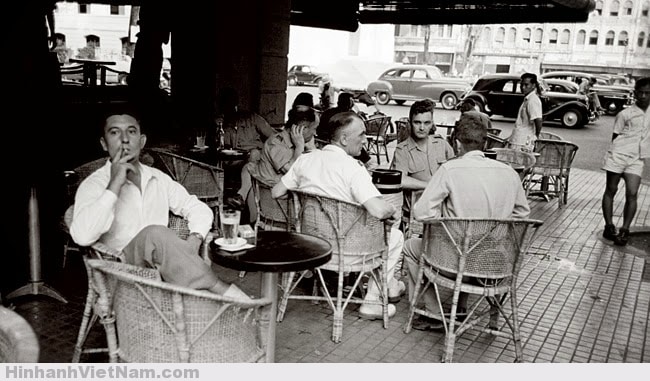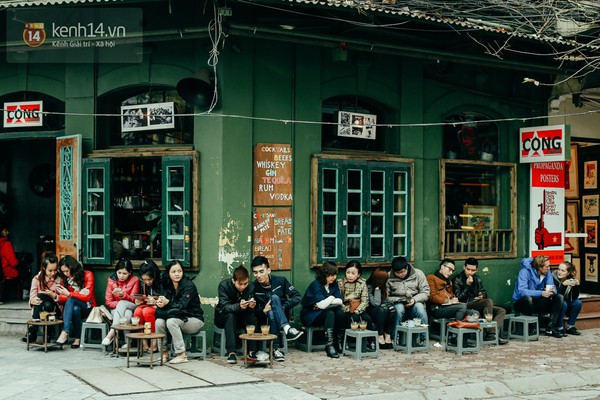Vietnamese Coffee Culture

Vietnam is one of the world’s biggest coffee exporters, and its culture, history, and significance in Vietnamese life is all encompassing, writes Kim Thoa.
Do you know when the Vietnamese people first fell in love with coffee? The slightly bitter taste and aromatic smell of almonds, earth and freshly brewed coffee floods the senses. Coffee is enjoyed at all times of the day, from the first glass at breakfast or in work, to meetings, dates or social gatherings with friends and family. Coffee has a special place in Vietnamese culture, and this simple drink forms the epicenter of daily life
The origin of Coffee in Vietnam
Cà phê, café or coffee, depending on which language you speak, originated in the West, and the French have been importing it into Vietnam since colonial times. Back then, coffee was a drink reserved only for the nobility, French officials or the intellectuals. Gradually, coffee has become a favorite drink in the lives of all Vietnamese people.
From the 1870’s, the first coffee trees were planted at the churches in Ha Nam, Quang Binh, Kon Tum Province by monks. In 1888, the first coffee plantation was established in Ke So, Tonkin by the French residing the riverside area. As it became more popular, further plantations were created in highland areas such as Phu Quy, Nghe An, Dak Lak and Lam Dong.
Today, Vietnam is the world’s second-largest producer of coffee beans and has developed its own distinct coffee culture. Across the country, cultivation focuses on three main types of coffee: Arabica c, Robusta, and Excelsa (also known as Liberian Coffee).
Drinking Style
The sophistication of coffee is reflected in the drinking style of Vietnamese people who have their own unique way in which to enjoy it. They don’t consider it as a quick caffeine fix to wake you up in the morning like in America, rather, they sip a cup of coffee and think about life in the same way you might indulge in a good glass of Scotch.
Vietnamese people can happily drink coffee at any time of the day. Sitting in a quiet place, they take their time over a glass, reading the newspaper, chatting with friends, making a business deal or simply pondering life. The beans are mixed in different ways to create various flavors, and the three main coffee styles in Vietnam are: Filtered, Iced, or with flavors such as egg or coconut added to enhance the taste.
Filtered Coffee
 Coffee in Vietnam is often brewed in small metal (aluminum or stainless steel) filters known as a “phin” (which comes from the French word, “filtre”). The Vietnamese filter is akin to a tiny coffee pot that looks like a hat sitting atop the cup or glass. Inside is a chamber for the ground coffee beans, which are placed inside, and hot water is added and allowed to percolate through the small holes. The process can take up to fifteen minutes to complete, and this harks back to the Vietnamese ritual of taking one’s time over coffee.
Coffee in Vietnam is often brewed in small metal (aluminum or stainless steel) filters known as a “phin” (which comes from the French word, “filtre”). The Vietnamese filter is akin to a tiny coffee pot that looks like a hat sitting atop the cup or glass. Inside is a chamber for the ground coffee beans, which are placed inside, and hot water is added and allowed to percolate through the small holes. The process can take up to fifteen minutes to complete, and this harks back to the Vietnamese ritual of taking one’s time over coffee. Iced Milk Coffee
Iced milk Coffee (Cà phê sữa đá) consists of filtered coffee with condensed milk, which adds a sweet taste to the typically bitter coffee. Condensed milk and ice is added to the glass, the coffee percolates on top, then mixed before drinking. Iced milk coffee and iced black coffee are the two most popular types you will find in coffee shops or at home.
Vietnamese iced milk coffee was voted one of the 15 best coffees in the world by the renowned American travel magazine, Condé Nast Traveler, and also in the top 10 unique and delicious coffees of the world by Bloomberg. Condé Nast Traveler advises their readers that when you have the opportunity to go abroad, you shouldn’t rush to the branded coffee chains. Instead, you should look for local cafes that are true to the spirit and culture of the region.
Egg Coffee
While adding an egg to your coffee appears very strange to foreign visitors, Egg Coffee is a favorite of the residents of the country’s capital, Hanoi. Egg Coffee is made up of coffee, eggs, and milk – three simple ingredients that when mixed, create a unique flavor. Egg Coffee is preferred by those who don’t enjoy the bitter taste of filtered coffee, and the greasy egg, combined with the milk and ice delivers a very sweet fragrance and delicate after taste. Egg coffee must be enjoyed as soon as it has been mixed and is still hot, and drunken quickly.
In Hanoi, egg coffee is famous as a culinary specialty, first appearing in the early 20th Century. The most famous coffee shop is Giang Café, at 39 Nguyen Huu Huan and 109 Yen Phu. You can also enjoy a cup of egg coffee at Dinh Café, 2nd floor, 13 Dinh Tien Hoang, or Old Town Café, 11 Hang Gai.
Differences in coffee culture from Hanoi to Saigon
Different regions in Vietnam have their own distinct way of preparing and enjoying a coffee. For example, Southerners often wrap ground coffee in a thin fabric bag and cook in an earthenware kettle, preferring to drink iced coffee rather instead of hot. The Northerners usually choose filtered coffee and black or brown coffee beans that have a very strong flavor. All coffee shops have their own unique character and styles, and many have been operating from generation to generation.Vietnamese coffee is very strong and that is why coffee connoisseurs rarely go to Starbucks or branded chains, preferring their own little coffee shop that they frequent regularly.
Saigon
For the Saigonese, iced coffee is a popular drink for all ages. When you say “Hey, take a coffee?”, it is an excuse to invite friends for good conversation. The cups of coffee become the link between two or more people. You will see men who are drinking coffee with the daily newspaper, sitting on low plastic stools on the sidewalk, while the coffee shops are full every morning. There are very diverse beverage outlets in Saigon that serve iced milk coffee, from book coffee shops, pet impressive terraced and garden cafes, and streetside coffee stalls, catering to every preference.
“Café bệt” is a humorous term used in Saigon, where everyone sits freely on the ground to drink coffee. Notre-Dame Cathedral Basilica is the ideal place for this type of coffee. Here, black coffee and milk coffee are not brewed using filters, and they are often served in plastic ups with straws so you can drink on the move.
Hanoi
One of Hanoi’s oldest cafés, Cafe Lam Hanoi is a slightly musty, one-room establishment that is practically a historical monument. Its proprietor, Nguyen Lam, provided coffee, and often loans to the city’s impoverished artistic community during the war, and rumor has it that he is sitting on an art collection now worth a fortune.
He serves Vietnamese-style hot and iced coffee (with thick, sweet condensed milk) to a crowd of faithful regulars. Many of the great names in Vietnamese painting have passed through here: Nguyen Sang, Nguyen Tu Nghiem, Van Cao and Bui Xuan Phai, a veritable collection of masters in Vietnamese art culture.
Cafés in Hanoi are commonly named after the owner, and many streets are devoted to coffee shops, such as Hoe Nhai, Phan Dinh Phung, Nguyen Huu Huan and Trieu Viet Vuong. In Hanoi, coffee is the most favorite drink of artists, the elderly and business people. They usually sip a cup of coffee in the morning, in the cold air while watching the sunshine glimmer through the trees. Hanoians do not sit too long, but neither do they hurry. They consider drinking coffee as an art that hides a long story.
Hanoians have a much greater variety of names for their coffee compared to the Saigonese. One regional specialty is brown coffee (ca phe nau). It is served with condensed milk without ice, and is considered far bitterer than the Saigon version. Because of its small size and dense population, Hanoian coffee shops are simpler than in Saigon, and locals prefer to drink in small cafes in the Old Town or on the sidewalk.
Over time, coffee has become an indispensable part of the Vietnamese culture and is loved by so many foreign visitors. So, visiting a local coffee shop and sampling the menu should certainly be on your “to do list” when spending time in Vietnam.
Cruising with Emperor Cruises on Halong Bay, passengers also have the opportunity to learn the way to brew in the genuine style of the Vietnamese, and the onboard staff are experts in the vast array of different coffee types found across Vietnam. Enjoying a fresh brew, you can marvel at the paintings of Pham Luc and admire the spectacular scenery of the beautiful Bai Tu Long Bay. What a cultural experience to remember!










